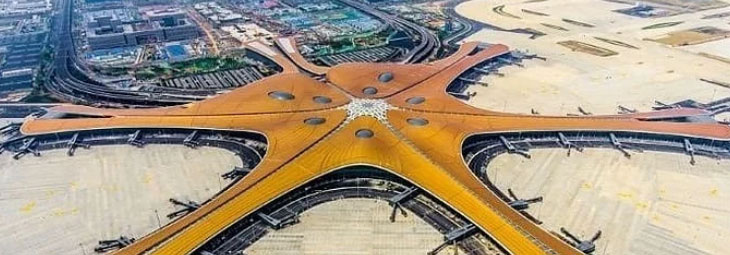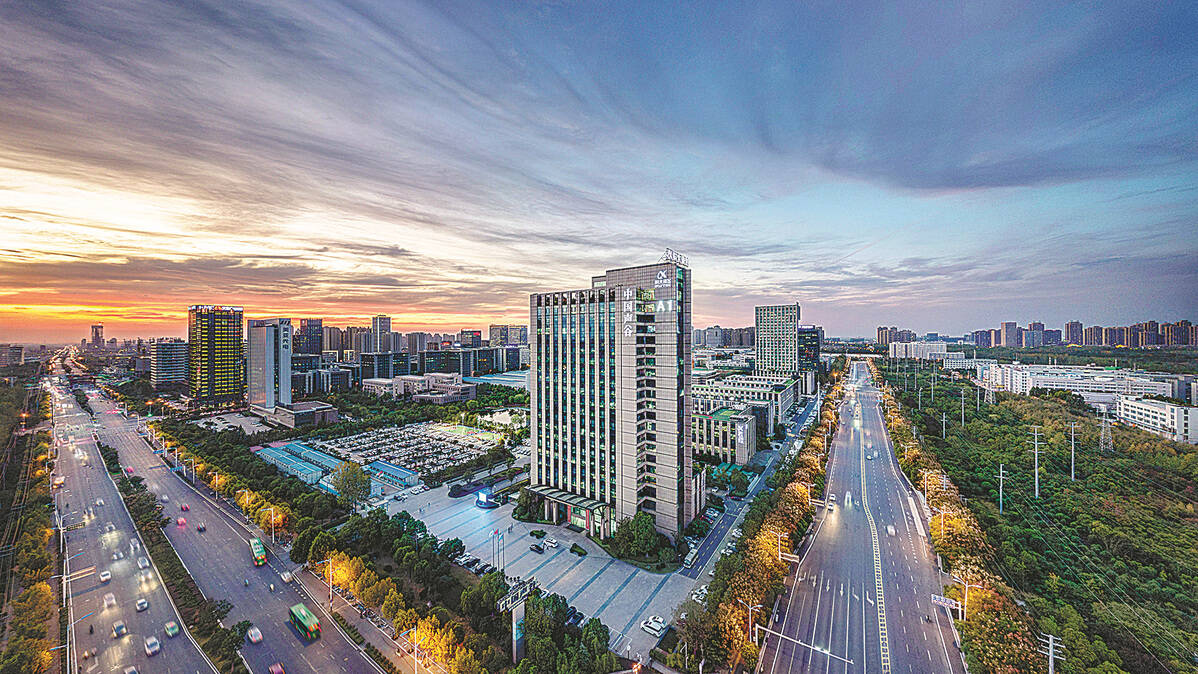

1.Overview of High-tech zones development in China
With more than 30 years of development, hi-tech zones have become an important force to drive China's innovation-driven development, making major breakthroughs in fields including quantum information, bio-medicines, smart manufacturing and industrial clusters as well as foreign talent exchanges. Since 2012, President Xi Jinping has paid over 20 visits to these zones, according to the Ministry of Science and Technology.
Li Youping, deputy director of the ministry's Torch High Technology Industry Development Center, said that over the last decade national high-tech zones have been a key pillar for economic growth, innovation, employment and entrepreneurship, talent training and international trade.
As of 2022, there are 173 national high-tech development zones, 84 more than in 2012. China has also established 23 indigenous innovation demonstration zones (Table 1), 20 more than in 2012, that are supported by these high-tech development zones.
The gross domestic product of high-tech development zones grew from 5.4 trillion yuan ($782 billion) in 2012 to 15.3 trillion yuan in 2021.These zones contributed to 13.4 percent of China's GDP in 2021 while only using 2.5 percent of the nation's construction land. The number of national high-tech zones whose annual revenue reached above 100 billion yuan has grown from 54 in 2012 to 97 in 2021.
Wu Jiaxi, deputy director of the ministry's department of research commercialization and regional innovation, said the high-tech zones have proved to be resilient to risks and can achieve growth despite global uncertainties in recent years. From January to July in 2022, the 173 national high-tech development zones achieved a gross industrial output worth 17.5 trillion yuan, an 8.1 percent growth compared to the same period last year. This output generated 27.4 trillion yuan of revenue, a 7.1 percent increase over the same period last year.
National high-tech zones are home to 84 percent of China's State Key Laboratories and 78 percent of the national technological innovation centers. As a result, high-tech zones have become a key hub for quality science and technology talent. By the end of 2021, national high-tech zones were home to over 4,400 research institutions with over 5.63 million researchers, which was 2.5 times higher than that in 2012.
The total research and development budget in these zones has more than tripled in the last decade, surpassing the 1 trillion-yuan milestone in 2021. The number of high-tech companies in national high-tech zones also increased from less than 20,000 in 2012 to 115,000 last year.
With these resources, high-tech zones have made numerous breakthroughs in quantum technologies, high-speed rail, the Beidou satellite navigation system, the C919 passenger jet, 5G telecommunication and other fields with strategic significance. China's first artificial intelligence chip, first quantum communication satellite, first vaccines for COVID-19 and many other breakthroughs were achieved by scientists and companies working in high-tech zones.
These high-tech zones have become a crucial platform for opening-up, innovation and cooperation. Many of these high-tech products are entering foreign markets. The total exports from high-tech zones made up about 3.2 percent of China's total exports in 2012. The figure had risen to 24.4 percent in 2021. More than 47,000 foreign researchers are currently working in these high-tech zones, along with 211,000 Chinese experts who returned home after studying abroad.
National high-tech zones had established over 2,200 overseas research institutions by the end of 2021, a 4.6-fold increase compared to 2012, and over 77 percent of them have implemented policies to support internationalization.
No. | Province | Number of National Innovation Demonstration Zones | Name of National Innovation Demonstration Zones (NIDZ) | National Hi-tech Development Zones Involved | Date Approved |
1 | Beijing | 1 | Zhongguancun NIDZ | Zhongguancun Science Park | 2009.3.13 |
2 | Hubei | 1 | Wuhan East Lake NIDZ | Wuhan East Lake High-tech Development Zone | 2009.12.8 |
3 | Shanghai | 1 | Shanghai Zhangjiang NIDZ | Shanghai Zhangjiang Hi-tech Industrial Development Zone | 2014.1.19 |
4 | Guang-dong | 2 | Shenzhen NIDZ | Shenzhen City (including industrial lands in 10 municipal districts) | 2014.5.13 |
5 | Peal River Delta NIDZ | National Hi-tech Zones in Guangzhou, Zhongshan, Dongguan Songshan Lake, Foshan, Huizhou,Zhuhai, Zhaoqing and Jiangmen | 2015.9.29 | ||
6 | Jiangsu | 1 | Sunan National Innovation Park | National Hi-tech Zones in Nanjing, Suzhou, Wuxi,Changzhou, Kunshan, Jiangyin, Wujin and Zhenjiang, and Suzhou Industrial Park | 2014.10.20 |
7 | Tianjin | 1 | Tianjin NIDZ | Tianjin Binhai Hi-tech Industrial Development Park | 2014.12.11 |
8 | Hunan | 1 | Chang-Zhu-Tan NIDZ | National Hi-tech Zones in Changsha, Zhuzhou and Xiangtan | 2014.12.11 |
9 | Sichuan | 1 | Chengdu NIDZ | Chengdu Hi-tech Industrial Development Zone | 2015.6.11 |
10 | Shanxi National Innovation Demonstration Zone | 1 | Xi'an NIDZ | Xi’an Hi-tech Industrial Development Zone | 2015.8.25 |
11 | Zhejiang | 2 | Hangzhou NIDZ | Hi-tech Zones in Hangzhou and Xiaoshan Linjiang | 2015.8.25 |
12 | Ningbo and Wenzhou NIDZ | Hi-tech Zones in Ningbo and Wenzhou | 2018.2.1 | ||
13 | Shandong | 1 | Shandong Peninsula NIDZ | Hi-tech Zones in Jinan, Qingdao, Zibo, Weifang, Yantai and Weihai | 2016.4.5 |
14 | Liaoning | 1 | Shenyang-Dalian NIDZ | Hi-tech Zones in Shenyang and Dalian | 2016.4.5 |
15 | Henan | 1 | Zheng-Luo-Xin NIDZ | Hi-tech Zones in Zhengzhou, Luoyang and Xinxiang | 2016.4.5 |
16 | Fujian | 1 | Fu-Xia-Quan NIDZ | Hi-tech Zones in Fuzhou, Xiamen and Qunzhou | 2016.6.16 |
17 | Anhui | 1 | He-Wu-Beng NIDZ | Hi-tech Zones in Hefei, Wuhu and Bengbu | 2016.6.16 |
18 | Chongqing | 1 | Chongqing NIDZ | Chongqing Hi-tech Industrial Development Zone | 2016.7.19 |
19 | Gansu | 1 | Lan-Bai NIDZ | Hi-tech Zones in Lanzhou and Baiyin | 2018.2.11 |
20 | Xinjiang | 1 | Wu-Chang-Shi NIDZ | Hi-tech Zones in Urumqi, Changji City and Shihezi | 2018.11.28 |
21 | Jiangxi | 1 | Poyang Lake NIDZ | Hi-tech Zones in Nanchang, Xinyu, Jingdezhen, Yingtan, Fuzhou, Ji’an and Ganzhou | 2019.8.29 |
22 | Jilin | 1 | Changchun NIDZ | Changchun Hi-tech Zone and Changchun Jingyue Hi-tech Zone | 2022.4.7 |
23 | Heilongjiang | 1 | Ha-Da-Qi NIDZ | Hi-tech Zones in Harbin, Daqing and Qiqihar | 2022.5.9 |
Table 1: List of National Innovation Demonstration Zones
2.the 14th Five-Year Development Plan of National Hi-tech Zones
China will have about 220 national hi-tech zones by the end of 2025, covering most of its prefecture-level cities in the eastern part of the country and major prefecture-level cities in the central and western parts, according to a plan released by the Ministry of Science and Technology in 2022.
To further promote the high-quality development of hi-tech zones, the new plan puts forward a series of key goals and major tasks during the 14th Five-Year Plan period. Besides an increased number of hi-tech zones, the plan also proposes a batch of specific parameters for its objectives. By the end of 2025, the hi-tech zones will contribute 15 percent of the country's GDP, up 1.7 percent compared with that of 2020, said the plan. At the same time, the number of hi-tech enterprises is expected to increase to 300,000 from 100,000 in 2020.
To achieve these goals, major tasks are set up, such as strengthening original innovation capacities, pooling national strategic talent, developing world-level industrial clusters, increasing the number of innovative enterprises, and advancing high-level innovation and entrepreneurship.
Promoting green and smart development, boosting regional coordinated development, deepening cooperation and opening up, and elevating governance levels are also among the major tasks.
Foreign experts are also encouraged to take leading roles in the planned sci-tech programs, said the plan, vowing to optimize their working and living environment.
In the future, national high-tech zones will focus on high quality, high standards and new technologies.These zones will become the vanguard for high-quality development and make more contributions to China's transformation into a scientific and technological powerhouse."

Figure 1: An aerial view of the Hefei National High-Tech Industry Development Zone [Photo by CHEN RENLEI/FOR CHINA DAILY]
Source:
<http://stdaily.com/English/Feature/202211/0d569972932a4cfdbce95dbcd3252303.shtml>
<https://www.chinadaily.com.cn/a/202209/15/WS63228081a310fd2b29e77be6.html>
<www.chinatorch.gov.cn/cxsfq/zzcx/202207/e8ce7d3a5968473992e1e88ab821f300.shtml>
<http://www.chinatorch.gov.cn/cxsfq/zzcx/202207/e8ce7d3a5968473992e1e88ab821f300.shtml>
Edited by Bao Lianying